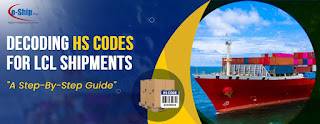Decoding HS Codes for LCL Shipments A Step By Step Guide

In the world of logistics and freight forwarding, navigating the complexities of international trade can be daunting. For businesses relying on LCL shipping (less-than-container-load), understanding Harmonized System (HS) codes is critical for smooth operations. This guide will help you unravel the mystery of HS codes, their importance, and how they impact shipping processes like sea freight shipping , obtaining a reliable ocean freight quote , and managing cargo, freight company operations. What Are HS Codes? HS codes, or Harmonized System codes, are internationally standardized numerical codes developed by the World Customs Organization (WCO). These codes classify traded goods, ensuring uniformity across borders. For instance, a shipment of textiles will have a specific HS code that denotes its type, material, and intended use. For businesses working with freight forwarders , these codes play a pivotal role in ensuring accurate customs documentation, dete...





